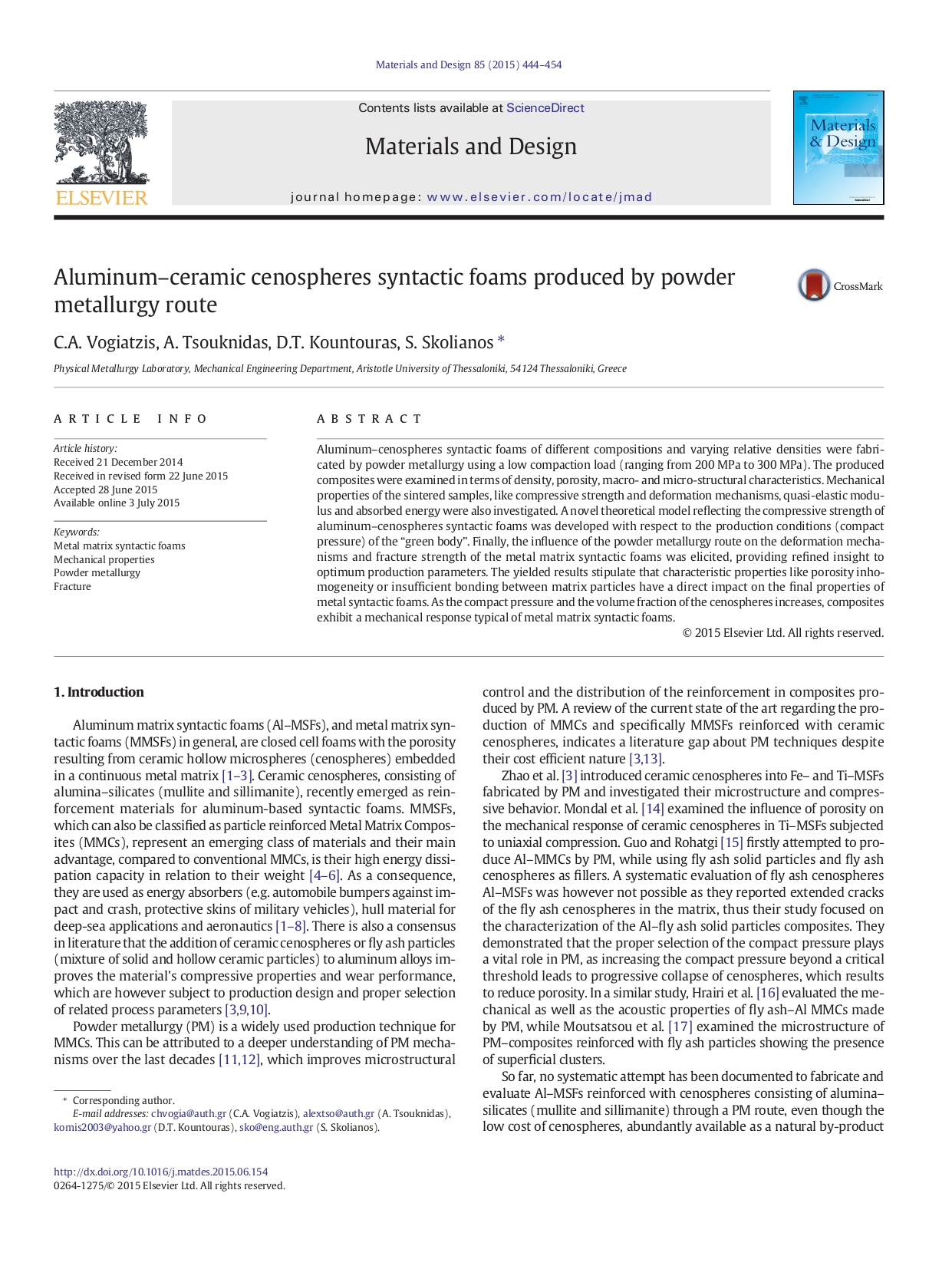Τitle
Aluminum-ceramic cenospheres syntactic foams produced by powder metallurgy route
Aluminum-ceramic cenospheres syntactic foams produced by powder metallurgy route
Materials and Design, 85, pp. 444-454.
Aluminum–cenospheres syntactic foams of different compositions and varying relative densities were fabricated by powder metallurgy using a low compaction load (ranging from 200 MPa to 300 MPa). The produced composites were examined in terms of density, porosity, macro- and micro-structural characteristics. Mechanical properties of the sintered samples, like compressive strength and deformation mechanisms, quasi-elastic modulus and absorbed energy were also investigated. A novel theoretical model reflecting the compressive strength of aluminum–cenospheres syntactic foams was developed with respect to the production conditions (compact pressure) of the “green body”. Finally, the influence of the powder metallurgy route on the deformation mechanisms and fracture strength of the metal matrix syntactic foams was elicited, providing refined insight to optimum production parameters. The yielded results stipulate that characteristic properties like porosity inhomogeneity or insufficient bonding between matrix particles have a direct impact on the final properties of metal syntactic foams. As the compact pressure and the volume fraction of the cenospheres increases, composites exhibit a mechanical response typical of metal matrix syntactic foams.
